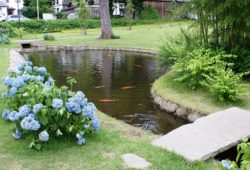Arowana Food
Here Is Information Over Arowana Food That You’ll Want To Take Note Of.

Contents
What You Need To Know About Arowana Food
One of the main concerns of arowana breeders and collectors is selecting the appropriate type of food for their pets. Knowing the right diet for arowanas (affiliate link) is very important due to the fact that the health and even the physical appearance of such fish depend on it.
Arowanas are mainly carnivores. Being so, they prefer to be fed with a staple of small fishes, shrimps, crabs and even insects. There are however, restrictions to the diet of arowanas depending on the species where they belong. The most common types of arowana food are the following:
Arowana Food List:
- Arowana Pellets (Hikari Trop Carnivore Sticks 8.8oz
– Product Link)
- Arowana Sticks
- Small Fish
- Krill
- Prawns
- Shrimps
- Insects (mealworms, centipedes, crickets, etc.)
Types of Arowana Food
All arowana species strongly prefer live food over anything else. This may be attributed to the fact that arowanas are dominant predators in the wild. Live arowana feed may include small fish, krill, prawns, shrimps, frogs, mealworms and a wide range of insects like moths, centipedes and crickets. However healthy insects and small creatures are as arowana food, it can also be very expensive to feed them with live food all the time. In case live food becomes too costly for your budget, frozen food can also be used.
Frozen food also consists of several creatures and critters which is usually fed to arowanas as live food. Prawns and shrimps are the most widely used frozen food while small crabs and fish can also be stored as frozen food. Using frozen food is far easier than feeding live creatures. For owners and hobbyists with very little time in their hands, frozen food is a good option as it minimizes the time preparation time while it can also slash a few dollars from the budget.
Aside from using frozen food as a substitute for live food, pellets can also be used. Pellets are considered as dry food and are usually manufactured to cater to the nutritional needs of the arowana. Fish pellets contain protein and additional vitamins and are made to coincide with the dietary and nutritional requirements of arowanas.
Note of Caution
In order to effectively keep arowanas healthy, owners must make it a point to vary the diet of their pet. A combination of live, frozen and dry food is ideal in raising arowanas as healthy as they can be. Owners must never stick with a single type of arowana food because it may have serious consequences on the health of the fish. For example, while arowanas enjoy eating small fish, there is a big tendency that they will suffer from a buildup of fat in their bodies once they have too much of it. The accumulation of fat in their bodies can lead to serious health problems and might even lead to its death.
Caution must also be taken in feeding like food to arowanas. Small crabs, fish, frogs, prawns, shrimps and other live creatures can serve as carriers of diseases which can be passed on to the fish itself. Live food can play host to parasites which can inhabit the body of the arowana once it is ingested. As a safeguard, owners usually quarantine live feed before giving them to their pets. This will lessen the chances of parasites and diseases to contaminate the live food and consequently expose the arowana to disease and illnesses.
Pellets, on one hand, must be used for supplementary purposes and should not be used as the main food for arowanas. The ideal types of pellets are the ones that can float on the tank when given to the fish. Dry food and even frozen food usually sink at the bottom of the tank and will be off no use to the arowana. Known as surface feeders, arowanas will seldom feed at the bottom of the aquarium or tank. This, in turn, will cause a buildup of excess food at the bottom and accumulate as residual waste.
Keeping in mind the basic things about arowana food is an important element in keeping them healthy, beautiful and lively. After all, much of the arowana’s physical appearance, disposition and well-being can be attributed to its diet. While owners are required to be careful and detail-oriented in properly feeding their arowana, the satisfaction they get from raising a beautiful and healthy arowana always outweighs the effort required.



